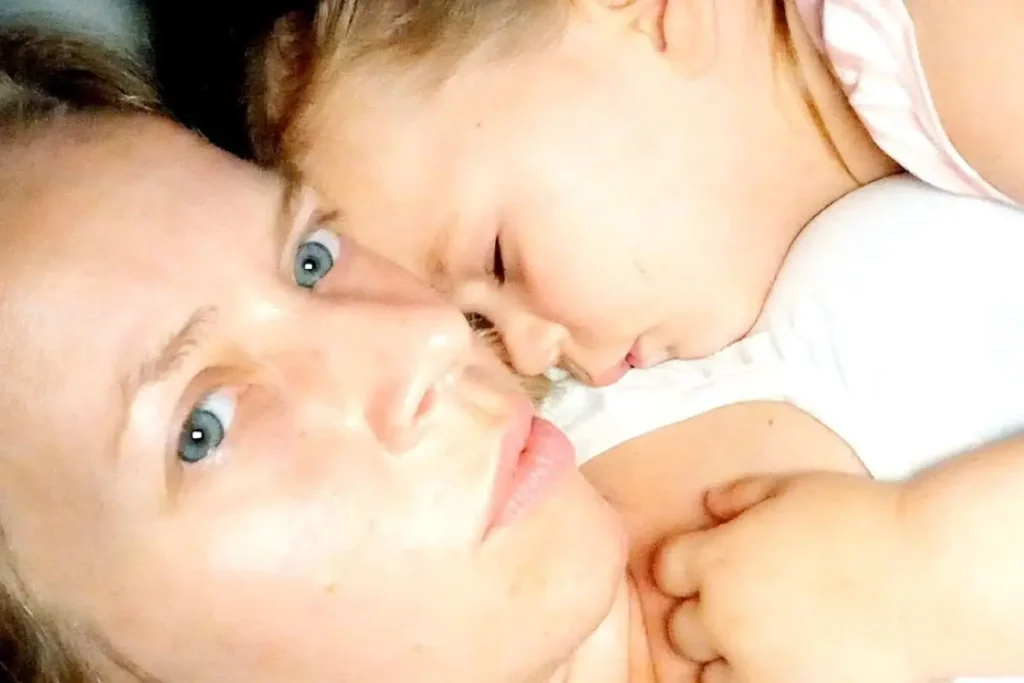There are several common reasons why is your toddler fighting bedtime.
✅Overtiredness or under-tiredness due to an improper sleep schedule is a frequent culprit.
✅Separation anxiety and fear of missing out on fun with family members can also make toddlers reluctant to go to bed.
✅The normal toddler drive for independence and boundary testing often manifests as bedtime resistance.
✅Finally, bedroom environment issues like the room being too bright, loud, or stimulating can interfere with a toddler’s ability to settle down to sleep.
It’s important for parents to understand that some degree of bedtime resistance is a normal part of toddler development. However, if it becomes severe or prolonged, it can lead to chronic sleep problems that disrupt the whole family’s rest and well-being. Addressing bedtime battles proactively and consistently is key.

#1 Ideal Bedtime Routine for Toddler Fighting Bedtime
Creating a consistent, calming, connection-focused bedtime routine is one of the most powerful tools for helping toddlers settle to sleep more easily.
✅ A good toddler bedtime routine includes quiet wind-down activities 30-60 minutes before bed, a warm bath, changing into pajamas, reading books or telling stories together, offering cuddles and kisses, and using positive bedtime affirmations.
✅Sticking to a consistent lights-out time, usually between 7-8 pm for toddlers, is also important.
✅Keeping the routine fairly brief, around 30 minutes, is best for toddlers.
✅Using a visual bedtime routine chart can help toddlers understand and cooperate with the steps of the routine. Here is one FREE printable example for morning and night kids routine

With repetition, the predictability of the routine itself becomes a comforting cue that it’s time to relax and sleep.
#2 Optimizing Daytime Schedule and Environment
What happens during the day sets the stage for how well a toddler sleeps at night. Ensuring the child has an age-appropriate nap schedule and sufficient wake windows before bed prevents overtiredness, which can lead to bedtime meltdowns.
✅Toddlers also need plenty of physical activity and outdoor time during the day, but not in the hours just before bed.
✅ Limiting screen time before bed, especially in the hour prior, is also key for encouraging sound sleep. Blue light from screens suppresses melatonin, the sleep hormone.
✅Creating a cool, dark, quiet bedroom environment is important for signaling to a toddler’s body that it’s time for sleep. Even very dim light can interfere with melatonin production, so using blackout curtains or shades is a good idea.
✅A white noise machine or fan can help block disruptive noises.

#3 Strategies for Handling Toddler Stalling
When bedtime battles arise, there are several effective strategies parents can use.
✅ Offering limited choices within the routine, like which pajamas to wear or books to read, can increase the toddler’s sense of control and decrease power struggles.
✅Setting clear expectations and boundaries around staying in bed is important. If the toddler gets up, calmly and quietly return them to bed without engaging.
✅Bedtime fading, or temporarily setting bedtime later and then gradually moving it earlier, can help a toddler who is routinely fighting sleep.
The key is keeping the bedtime consistent once you find the sweet spot that allows them to fall asleep quickly. Toddlers thrive on predictability.
#4 Coping with Bedtime Fears and Anxiety
For toddlers experiencing separation anxiety or fears at bedtime, validation of their feelings along with calm reassurance and boundary-setting is key.
✅Providing a comfort object like a stuffed animal or a special blanket to snuggle can help.
✅Using a dim nightlight or “monster spray” may soothe a toddler who is afraid of the dark.
✅Practicing brief separation exercises during the day, where the parent leaves and returns after a minute or two, can help build the toddler’s confidence that their caregiver always comes back.
✅If anxiety is severe or persists for a long period, consulting the pediatrician is advised to rule out an anxiety disorder.

#5 The Importance of Perspective
In the thick of bedtime battles, it’s helpful for parents to remember that this is a common and developmentally normal challenge. Toddlers are learning to assert their independence while still needing a lot of parental help regulating their emotions and behaviors.
Even with the most consistent routines, some phases of sleep disruption are to be expected as children grow and reach new milestones.
✅The most important things are to stay loving and patient, pick an appropriate approach for your family, and remain as consistent as possible in executing it.
✅Celebrate the small successes and special moments of connection in the bedtime routine.
With time and repetition, your toddler will develop positive associations with sleep and the battles will fade. You’ve got this!
My Experience on Toddlers Fighting Bedtime
When my first child was a toddler, bedtime was a nightly battle that left me feeling drained and discouraged. I tried everything I could think of, but nothing seemed to work consistently. (Read: I wasn’t consistent!)
It wasn’t until I had my second child that I discovered the power of a predictable, soothing bedtime routine and realized I had been missing some key elements with my first.
Implementing the strategies outlined in this article made a world of difference. While it took some time and patience, my secondborn began settling to sleep more easily and sleeping more soundly through the night.
I only wish I had known about these techniques sooner! If you’re in the thick of toddler bedtime battles, hang in there and know that change is possible.
